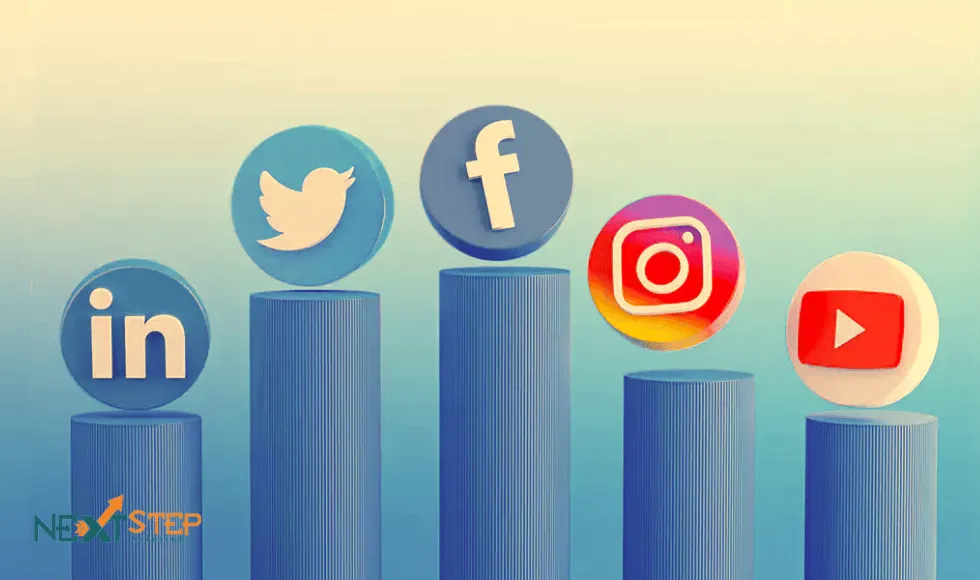Social media marketing has evolved from an optional tactic to a core business strategy, fundamentally reshaping how organizations connect with audiences, build brands, and drive revenue. With 5.42 billion global users spending an average of 141 minutes daily across nearly 7 platforms, social networks form the largest interconnected marketplace in history. This unprecedented reach delivers measurable advantages that transcend industry and scale.
Core Business Functions Enabled by Social Media Marketing
1. Brand Visibility and Audience Reach
Social platforms provide instant access to global audiences at minimal cost. A single viral post can exponentially amplify brand recognition, while consistent content publication increases website traffic by 55%. Over 90% of consumers maintain active social profiles, making these channels non-negotiable for visibility. The visual nature of platforms like Instagram and TikTok accelerates brand recall, with 78% of consumers discovering products through social content. Local businesses leverage geo-targeting to engage community members, while multinationals deploy multi-platform campaigns for worldwide impact.
2. Precision Audience Engagement
Unlike traditional advertising, social media enables two-way conversations that build authentic relationships. Real-time commenting, messaging, and community management transform customers into active participants rather than passive recipients. Brands that respond to comments within three hours see 80% higher customer loyalty rates. Interactive features—polls, quizzes, live streams—boost engagement by 41% when strategically deployed. This participatory dynamic fosters trust, with 75% of consumers judging brand credibility based on social media presence.
3. Data-Driven Consumer Insights
Social platforms generate real-time behavioral analytics that inform business strategy. Marketers track engagement patterns, content preferences, and sentiment trends to refine offerings. Analysis of shares, clicks, and dwell times reveals unmet needs and emerging preferences. Over 48% of brands use social listening to identify product development opportunities, while 31% monitor cultural trends for timely content adaptation. This intelligence stream enables agile decision-making grounded in actual user behavior rather than assumptions.
4. Sales Acceleration and Conversion
Social commerce transforms platforms into direct revenue channels. Features like Instagram Shops and TikTok Shop enable frictionless purchasing without leaving apps, reducing cart abandonment by 26%. Retargeting ads recover 70% of lost sales by reminding users of abandoned carts. Platforms dominate consumer purchase journeys: 61% discover products via Instagram, 39% complete purchases through Facebook, and 36% use TikTok for transaction decisions. Short-form video drives particularly high conversion, with 78% of consumers preferring it for product research.
5. Competitive Agility and Market Positioning
Continuous social monitoring reveals competitor strategies in real time. Brands analyze rivals’ engagement rates, content gaps, and campaign performance to identify market opportunities. This intelligence enables rapid adaptation—launching counter-campaigns during competitor missteps or capitalizing on underserved audience segments. Social presence also establishes industry authority: Regular thought leadership content positions brands as subject matter experts, increasing share-of-voice in crowded markets.
6. Cost-Effective Resource Allocation
Social media delivers exceptional marketing ROI through organic and paid avenues. Organic content builds communities without budget constraints, while targeted ads achieve precise audience segmentation at lower costs than traditional media. Granular demographic, interest, and behavioral targeting ensures 90% ad relevance. Automated tools further optimize spending by scheduling posts during peak engagement windows and pausing underperforming campaigns.
Professional Knowledge Base: Social Listening Fundamentals
Social listening involves monitoring digital conversations to extract actionable business intelligence. This discipline moves beyond basic metrics to interpret audience sentiment, emerging trends, and competitive dynamics.
Core Components of Social Listening
- Conversation Tracking: Monitoring brand mentions, competitor names, and industry keywords across platforms using specialized tools. This captures explicit feedback and indirect sentiment signals.
- Sentiment Analysis: Classifying mentions as positive, negative, or neutral to gauge brand perception. Advanced tools detect emotional nuances like frustration or excitement in unstructured text.
- Trend Identification: Spotting rising topics, hashtags, and content formats within target demographics. This predicts viral movements before mainstream adoption.
- Competitive Benchmarking: Comparing share-of-voice, engagement rates, and campaign performance against industry rivals.
Table: Social Listening Implementation Framework
| Objective | Data Sources | Analytical Approach |
|---|---|---|
| Brand Health Monitoring | Brand mentions, review sites, community forums | Sentiment scoring, complaint categorization, influencer impact analysis |
| Product Feedback Analysis | Hashtag conversations, comment threads, direct messages | Theme extraction, feature request clustering, pain point mapping |
| Crisis Detection | Sudden mention spikes, negative sentiment surges, competitor crises | Alert systems, impact projection, response protocol activation |
| Cultural Trendjacking | Viral hashtags, meme formats, platform algorithm shifts | Virality lifespan prediction, brand relevance scoring, content adaptation planning |
Strategic Applications
- Product teams integrate feedback from social conversations into development roadmaps, prioritizing features mentioned in 17% of unsolicited feedback.
- Marketing departments align campaigns with cultural moments identified through trend analysis, boosting relevance and engagement.
- Customer service teams identify emerging issues through complaint pattern recognition, reducing response times by 45%.
- Executives leverage social data for market forecasting, with social listening insights informing 63% of strategic pivots.
Quantifiable Business Impacts
- Revenue Impact: Brands with consistent social strategies achieve 33% higher sales velocity. Social commerce sales will exceed $2.9 trillion globally by 2026, accounting for 20% of all e-commerce.
- Operational Efficiency: Companies using social customer service reduce support costs by 30% while increasing satisfaction scores by 18 points.
- Audience Growth: Organizations posting 16+ monthly content pieces gain 4.5x more leads than those with minimal presence.
- Advertising Performance: Social ads generate 3x higher conversion rates than traditional display ads, with 49% of consumers making purchases through targeted campaigns.
Platform-Specific Advantages
Table: Strategic Platform Selection Guide
| Platform | Dominant User Base | Optimal Business Use | Engagement Tip |
|---|---|---|---|
| 3.06B MAUs; balanced gender; peak 25-34 age group | Customer retention, warm market nurturing, local promotions | Mix curated content with user-generated posts in Stories | |
| 2B MAUs; 55% female; 82% Gen Z penetration | Visual storytelling, product discovery, influencer collaborations | Post 3-10 Stories daily with interactive elements | |
| 1B professionals; 59% aged 25-34; decision-makers | B2B lead generation, talent acquisition, industry authority building | Share long-form articles with data-driven insights | |
| TikTok | 1.8B MAUs; 54% female; 82% Gen Z users | Viral reach, trend participation, shoppable entertainment | Combine trending sounds with educational hooks |
| X (Twitter) | 500M MAUs; 59.8% male; news-focused users | Real-time engagement, customer service, cultural commentary | Join topical conversations with expert perspectives |
Emerging Strategic Applications
- AI-Enhanced Content Creation: Generative tools accelerate ideation and production, with 69% of marketers using AI for social content. Human oversight ensures brand alignment while increasing output volume by 70%.
- Micro-Virality Cultivation: Brands shift from chasing mass virality to nurturing niche community trends. Focused engagement with micro-influencers drives 48% higher conversion than broad campaigns.
- Conversational Commerce: Chat integration enables transactional dialogues where customers book services, track orders, and make purchases via messaging apps.
- Ephemeral Content Strategies: 24-hour Stories create urgency while providing low-pressure testing grounds for experimental content formats.
- Cross-Platform Synergy: Content repurposing across platforms increases reach 3x—TikTok videos to Reels, webinar snippets to LinkedIn carousels, tweet threads to blog posts.
Social media marketing’s adaptability ensures continued relevance amid algorithmic shifts and consumer behavior changes. Its integration across business functions—from product development to customer service—makes it indispensable for competitive resilience. Organizations that master platform-specific storytelling while leveraging data-driven insights will dominate attention economies and convert digital engagement into sustainable growth.

